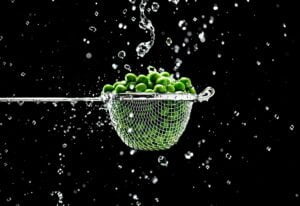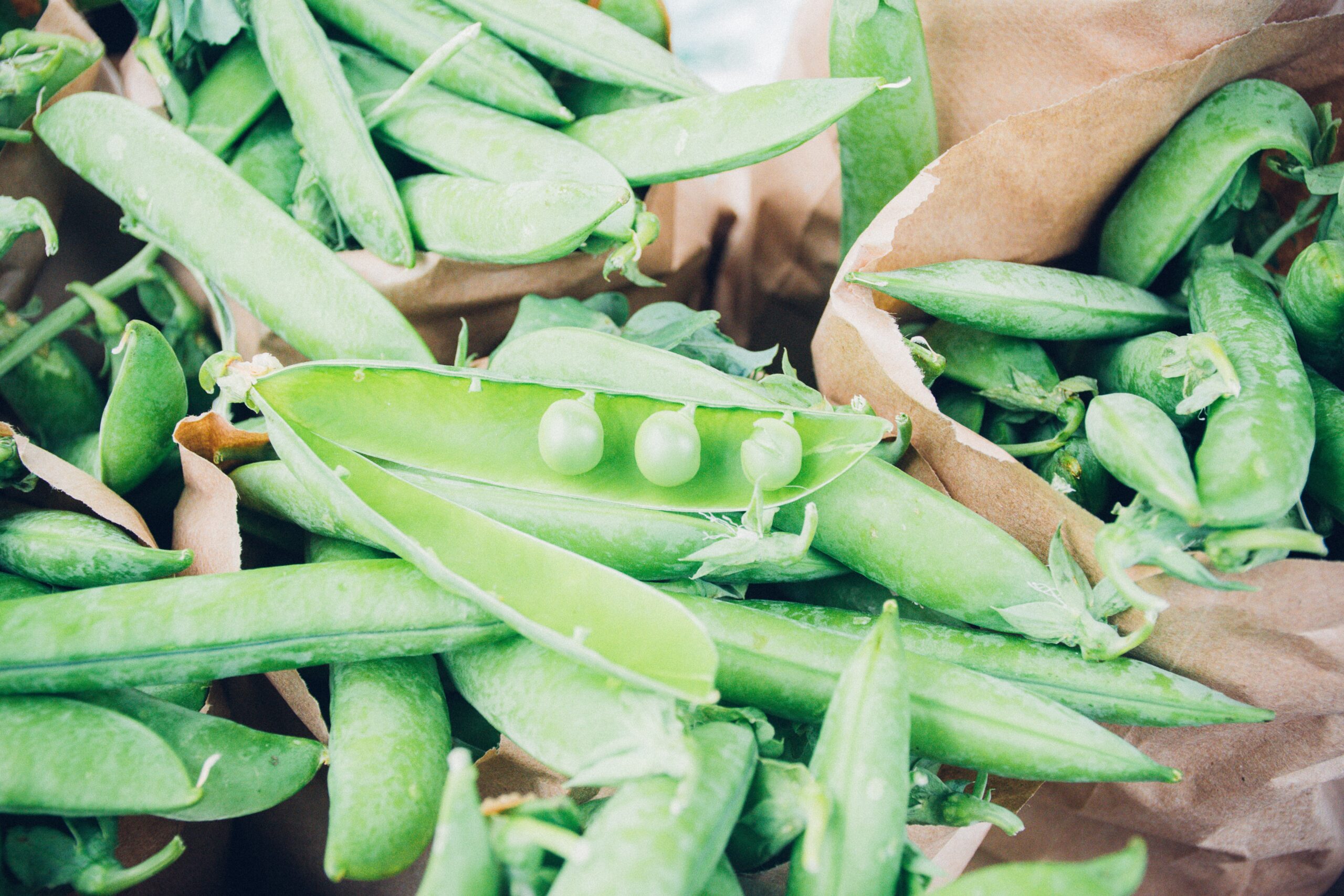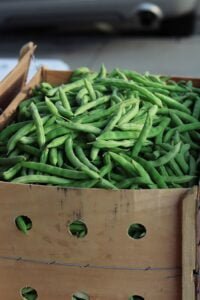CULTIVATION OF PEAS
This article is about green peas cultivation in Pakistan.
Introduction
The scientific name of pea is Pisum sativum and the family is “Leguminosae”. It is firstly cultivated in Syria, Euthopia and Turkey. Then it is cultivated in Jordan. In 4400 to 4800 B.C cultivation shifted to Egypt and in 3600 to 3800 B.C it is cultivated in northern parts/areas of the Egypt. The best time of cultivation is cool season. Green peas cultivation in Pakistan is discussed here.
Uses
The seeds are used as vegetable. It is also used in soups. It is a rich source of proteins and vitamins such as vitamin A, C and K. There is a higher content of sugar and minerals in it. A substance choline is present in peas which reduce tumor formation.
Green Peas Cultivation in Pakistan
Site Selection
It is the selection of location for particular crop which you want to grow.
For selection of site for peas following points are important:
- Sunny site, where sunlight remain 6 to 8 hours.
- Best soil is well-drained sandy loamy soil.
- Soil pH should be neutral to slightly acidic at this pH all the nutrients are available.
Site Clearing
It is a process in which the trees, stumps, brush, stones and other obstacles are removed from the field where you want to grow your crop.
Burning
It is the process of burning the residue of previously harvested crop. For example the burning of wheat and rice straw and etc.
Climate
It is winter, cool season vegetable, but frost adversely affects its flowers and pods. Extreme low and high temperature is also dangerous for its growth. 18 to 20 ℃ temperature is required for its initial growth but later on, 12-15℃ temperature is favorable.
You can also read; Moringa Leaves benefits
Soil
Ideal soil for pea’s cultivation is silt to sandy loams. They grow best in soil with pH 5.5-7.5. Below this pH there is reduction in the yield.
Manures and fertilizers
Organic vs Inorganic fertilizers:
Organic fertilizer:
- Increase soil fertility.
- Slow release of nutrient supply.
- Increase microbial activity in soil.
- Long term effect is there.
- This is require in bulk.
- Residual effect is not there in soil.
- Eg:Farm yard manure,blood meal,poultry manure,sludge,night soil,guano bird excreata.
Inorganic fertilizer:
- Quick nutrient supply.
- Having residual effect on soil.
- Decrease soil fertility.
- Reduce microbial activity.
- Short term effect.
- This is require in less quantity.
- Examples : urea , SSP ,dap, ammonium nitrate etc…
Apply 20 t/ha FYM at the time of land preparation. Before sowing we apply N, P, K fertilizers at the ratio of 15:60:40 kg/ha. Nitrogen is applied according to the need of the plant because being a leguminous crop it can fix the atmospheric nitrogen. If we increased the N, P, K ratio, there is increased in yield. The recommended doses of fertilizers are 45, 90, 90 kg/ha of Nitrogen, phosphorus and potash respectively.
Seed rate and Spacing
The recommended seed rate for peas cultivation is 75 to 80 Kg/ha. There is early and late sowing of peas is done so there are different seed rates.
Early sowing pea crop 100-120 kg/ha
Late sowing pea crop 80-90 kg/ha
The seeds are sown at 10 cm(P*P) plant to plant distance and 40 to 60 cm(R*R) row to row distance.
Sowing time
There will be different sowing time in plain and hilly areas. In plain areas, sowing time is October to end of December. In hilly areas, is March to May.
Seed treatment
Seed treatment done with culture of bacteria (Rhizobium). It can early fix atmospheric nitrogen and nodule formation occurs very quickly. Seed treatment also done with Thriam at the rate of 240g/ha seed.
Sowing
The field should be ploughed properly. The seeds sow at proper depth and there should be proper moisture in the soil. It helps in greater germination percentage.
Mulching
It is a process of covering the soil with any mulching material (straw, compost, plastic sheet) to conserve moisture, increase fertility and reduce weed initiation. Pea is a shallow rooted plant so it is important to apply mulch when seed is germinate two inches above the soil.
Irrigation
The supply of water to land or crops to help growth, typically by means of channels. A proper irrigation is recommended before sowing but if there is no pre-sowing irrigation then light irrigation is done after sowing. Frequent irrigation is more favorable for pea crop. Irrigate the field at 10-15 days interval. Irrigation is also applied at flowering stage and fruit setting stage.
Hoeing and Wedding
It is an important operation of pea cultivation. Hoeing and wedding is done to enhance the growth and development of pea vine. The field should be weed free. Different types of sprays and chemicals are applied/used according to the type of the weed.
Staking
Providing support to plants to remain straight and continue their growth is called stacking. If we grow taller variety of peas than staking is needed but a farmer on commercial level cannot do this. Sometime it is cultivated around the wheat crop. Than wheat straw are used as a source of staking. Intercropping of pea with wheat crop are also done at some places.
Micronutrients
Micronutrients are also applied as per requirement of the crop. To increase the size and quality of the grain ammonium molybdate is applied. It is applied at the flowering stage.
Varieties
There are two imported varieties of peas.
- Kalvex
- Blue bantam
Cultivars
- AM-I
- 226-Y/B
- Samina zarda
- Meteor
- Olympia
- Knight
- PI
Pakistan Varieties
- Sarsabz
- Climax
- Lampo
- Faislabad 2009
Area and Production in Pakistan
In Pakistan it is cultivated on an area of 22435 ha and it produce 144423 tons of peas. In Punjab this area is 17645 ha and it produce 112265 tons of peas.
Integrated weed management
Integrated weed management is an approach to managing weeds using multiple control techniques.
Weeds
- Bathu
- Krund
- Deela
- Leh
- Dumbi sitti
Cultural control
- There will be less row spacing
- Crop rotation
- Selected variety should work against weed
Mechanical control
- Pulling of weeds
- Use of tillage implements
Chemical control
- Weed scouting at proper time
- Properly identification of weeds
- Use of spray such as weed B GON
- Use of spray at proper time
Integrated pest management (IPM)
Integrated pest management is also known as integrated pest control (IPC) which performs the practices to control the pest from the field. IPM
Pest Management
Pest management is the method in which the elimination the unwanted creature.
For example:- aphids, nematodes, thrips
Insects and pests
- Pod borer:-
Symptoms of pod borer are following:-
- Enter in the pod. After entering it eat the seed.
- Pea aphid:-
Symptoms of pea aphid are following:-
- Enter into the cell
- Suck the sap
- Yellowing of leaves
Pest Scouting
Pest scouting is defined as the inspecting or checking the field for the pests including the insects, weeds and pathogens.
It is applied in the agriculture field.
Control of the pest
- Cultural control:-
Reducing or avoiding the pest damage to crops by adopting the ordinary farm practices in appropriate time. Such as hand pulling of the weed with all its roots.
- Mechanical control:-
Reducing or avoiding the pest damage to crops by using the physical means such as fences, barriers and electronic wires. It also includes the change the temperature to control the pest.
- Chemical control:-
Reducing or avoiding the pest damage to crops by using the chemical pesticides. Chemical pesticides are used to protect the plants from the pests and disease.
Integrated disease management
It is refers as control of disease by using different techniques.
Disease
Disease is defined as a disorder which produces the specific symptoms on the plants o a specific location. It is due to the deficiency of nutrients and attack of insects and pests. Like leaf curling and yellowing leaves.
Diseases
- Powdery mildew:-
Symptoms of powdery mildews are following; White patches appear on leaf. It also appears on pods and stems. These powdery patches fully covered the plant.
- Fusarium wilt rust:-
Symptoms of Fusarium with rust are following; Plant wilting. Yellow spots are present on the plant.
Diseases of pea crop
- Ascochyta blight/Black Spot
- Fusarium Wilt
- Downey Mildew
- Powdery Mildew
- Bacterial Blight
- Early Browning of pea
- Pea Enation Mosaic
Control of pea disease
- Cultural control:-
- use the resistant cultivar
- spray water to knock aphids off plants
- Chemical control:-
- Use the chemical pesticide to remove the disease from the plant
- Protect the plant from the harmful disease which affects the growth of plants.
Harvesting
Peas should be picked up at a maturity stage. The pods change its color from dark to light green. Picking is done by hand/machine and there should be four to five picking. After picking pods should not place at hot place. Tenderness and sugar content are two parameters for checking the quality of the pods. There is rapid reduction of the sugar content after maturity and amount of starch increases.
Method of Harvesting
- Traditionally, pigeon pea plants are harvested by cutting the stem at the base.
- The harvested plants are bundled and placed upright to dry.
- Pods and grain are separated by beating the dry plants with sticks or by using a thresher.

Yield
Yield is defined as the output of the input which is we cultivate in the field which give us the profit or loose. In agriculture, the yield is the land cultivation and germination of the seed.
Field pea varieties yield about 2000 to 6000 kg/ha.
Early varieties 3000-4000 kg/ha
Late varieties 6000-7000 kg/ha
Cost of production
Cost of production is defined as the cost of the object which is the sum of the resources cost. According to pea crop, the sum of resources cost which we use in the field like cultivation, seed price, watering, and other things.
Cost benefit ratio
Cost benefit ratio is defined as the analysis which is summarized the overall relationship of the relative crop and investment. According to pea crop, cost benefit ratio is the relationship of the benefit of pea crop and investment in the pea crop.
Grading
On the basis of quality and number of grains in the pods, peas are graded into A, B and C.
Storage
Peas should be stored for 15 days at 0℃ with more than 90% relative humidity. Peas are also freeze for 20-25 days at 10℃.
Marketing
Marketing in the agriculture involved the agriculture product to move from field to farm, market and to consumer. Peas are properly packed into the bags. Peas are packed up in the evening and sent to the target market at the morning.
Methods of marketing
- Private Negotiations
- Quotations on Samples
- Open Auction Method
Transportation from farm to consumer
Transportation of pea crop from farm to consumer is following;
- After harvesting it store in the store house
- Than go to the factory where different function are performed
- And then it is packed in packets and transport to the market and the consumer buys the pea.
- In Pakistan, locally peas after harvest take to farm and pack into the packets and transport to the market from where the buyer or consumer buy the peas.
- So, this is the complete discussion on green peas cultivation in Pakistan

